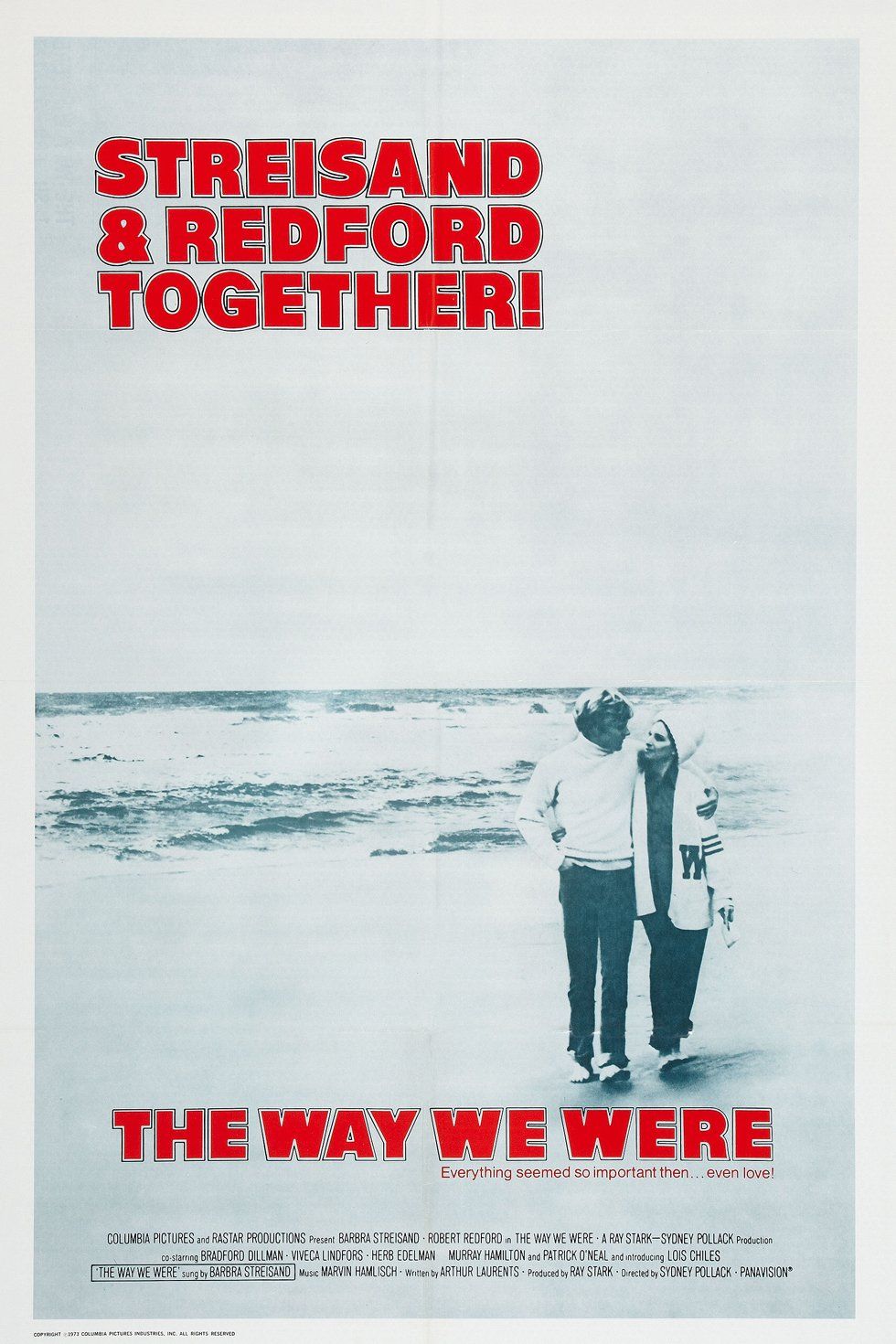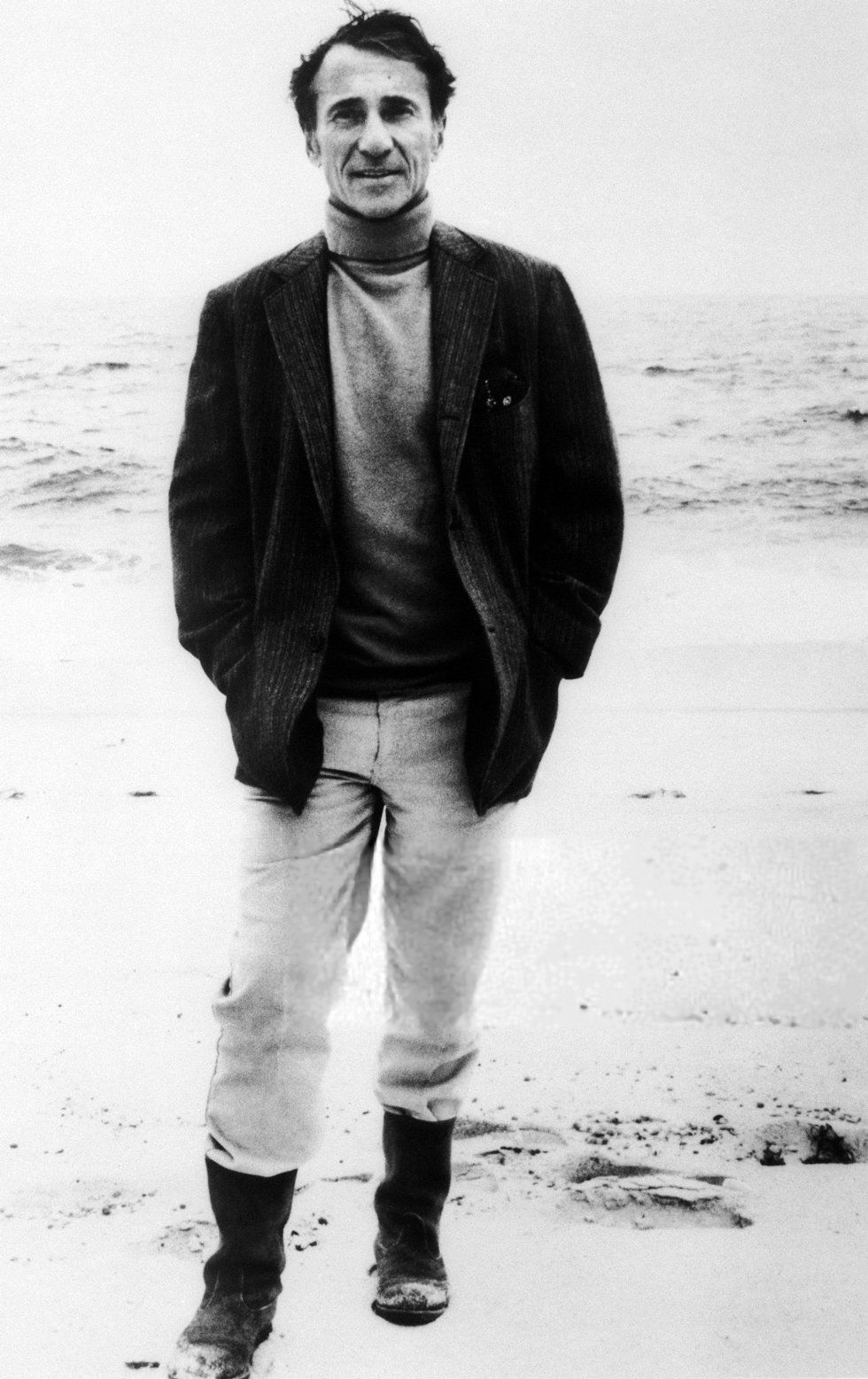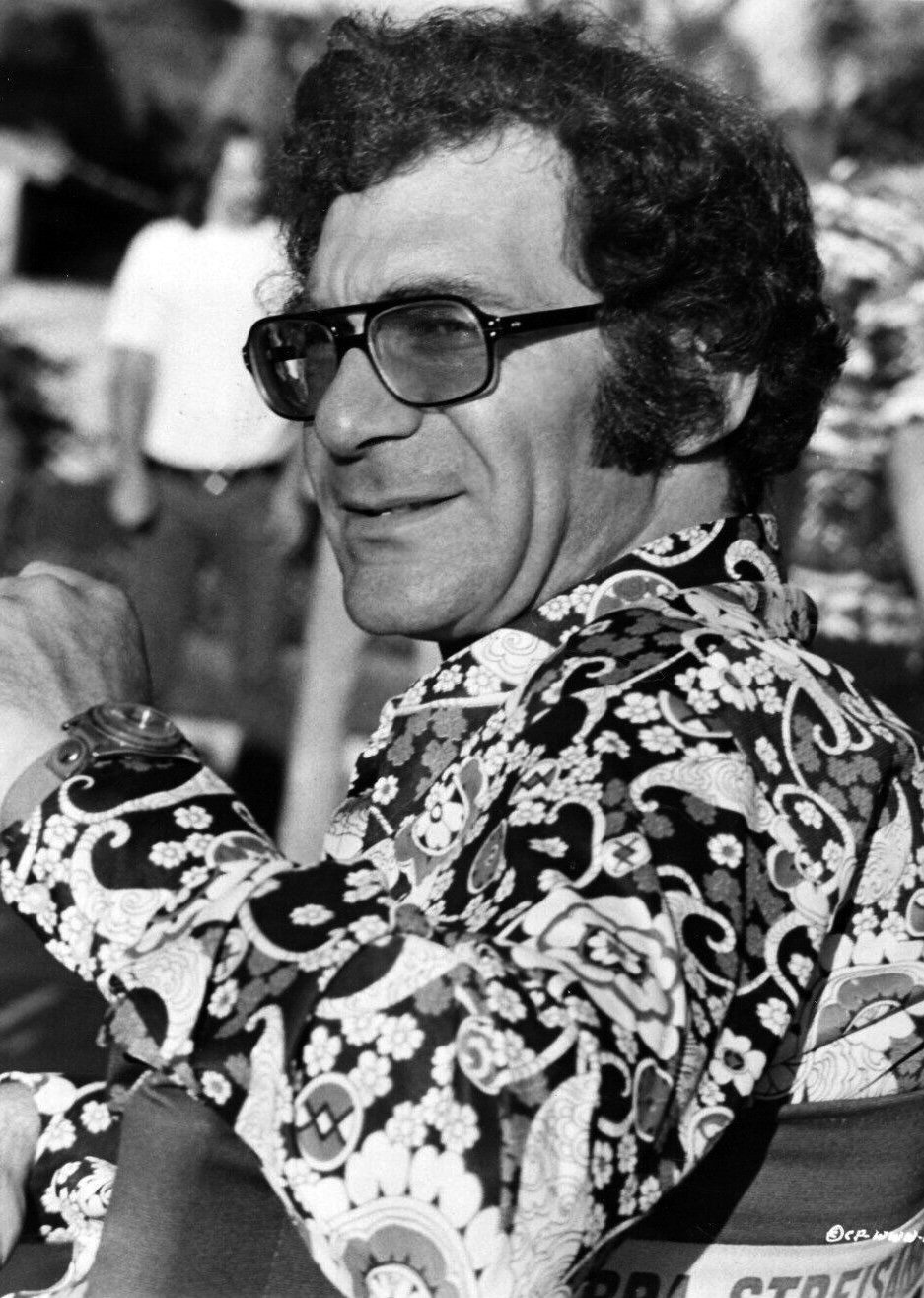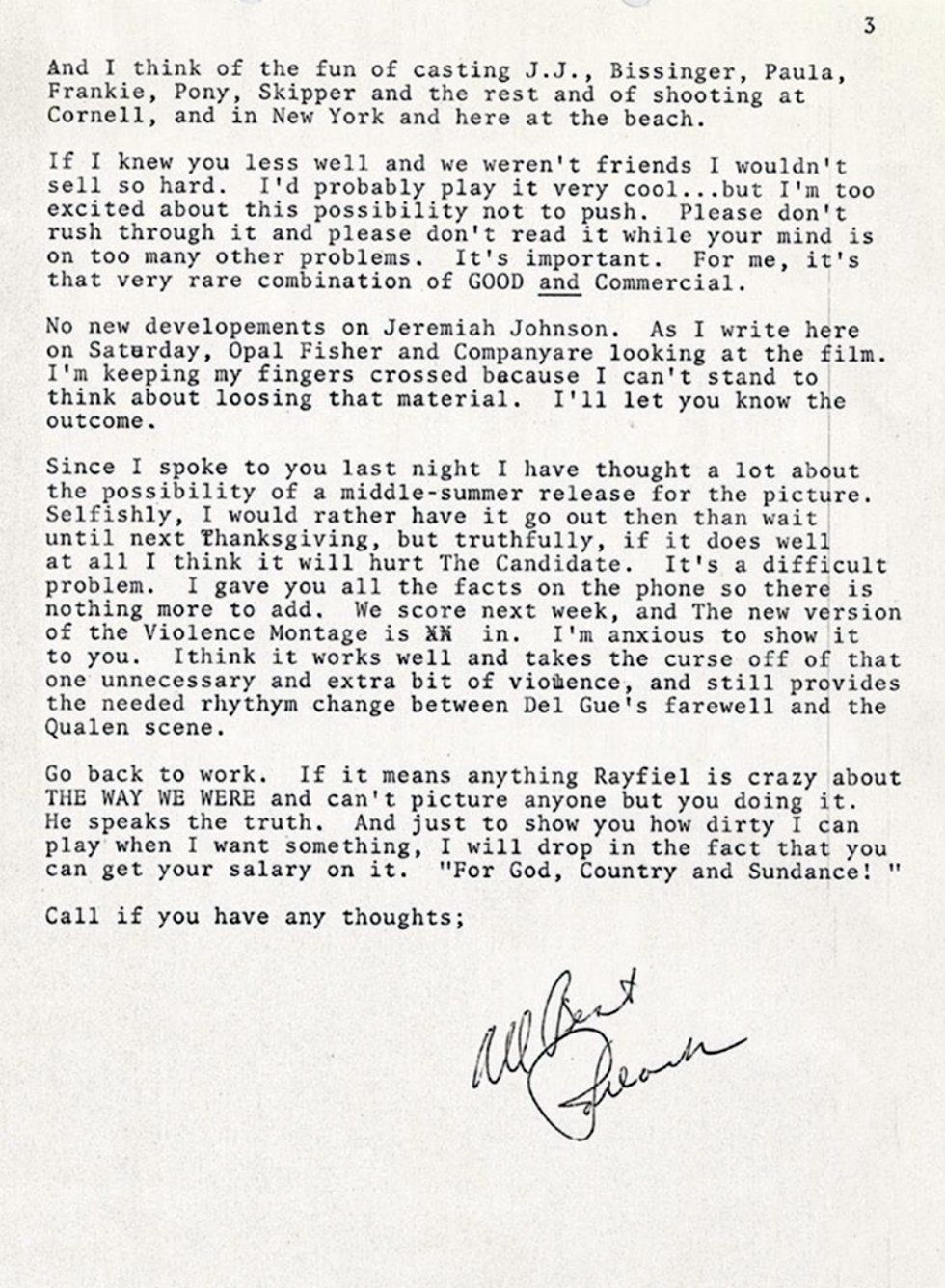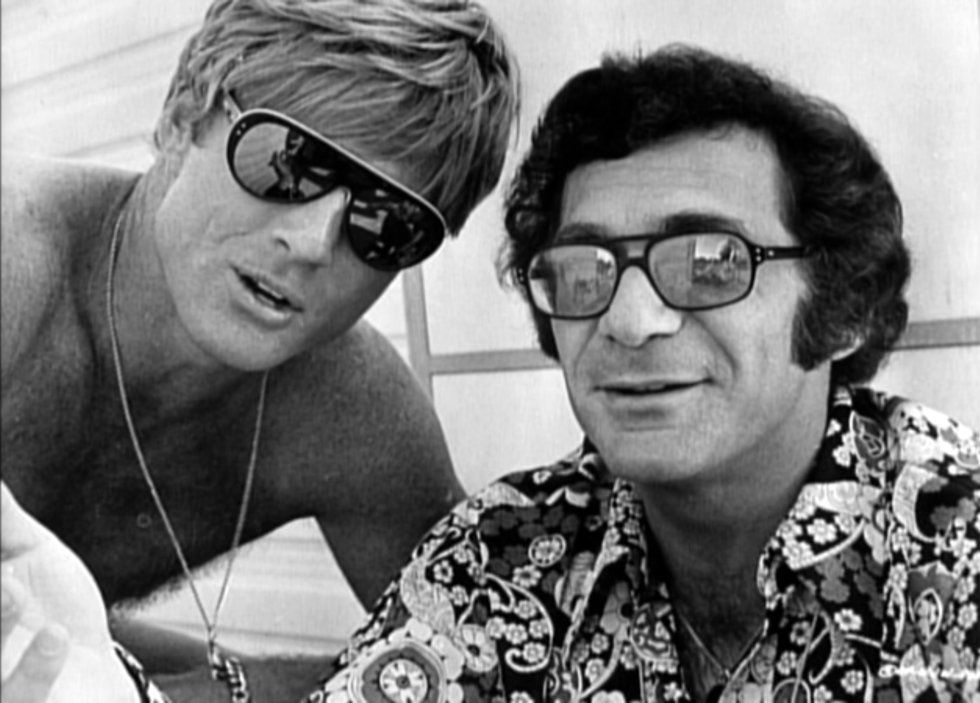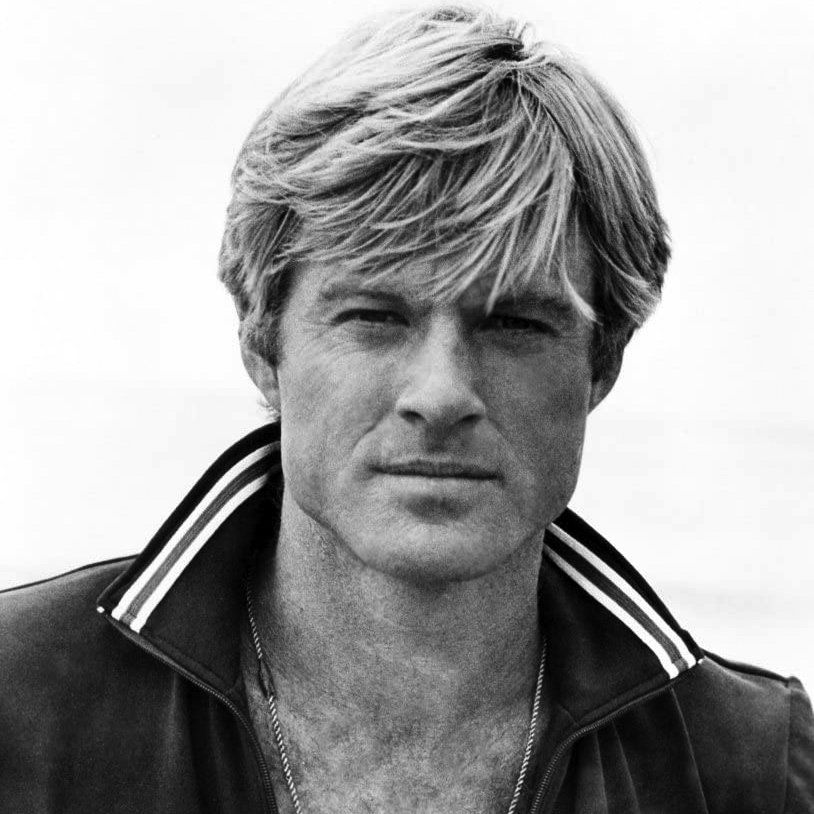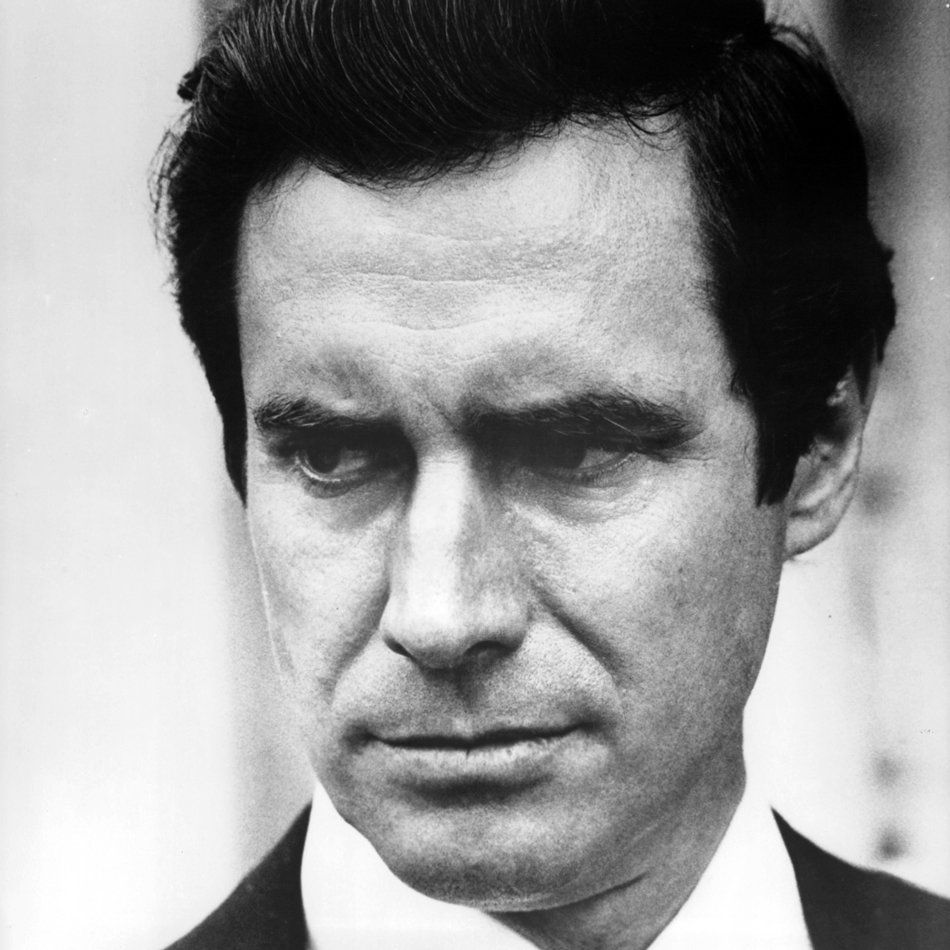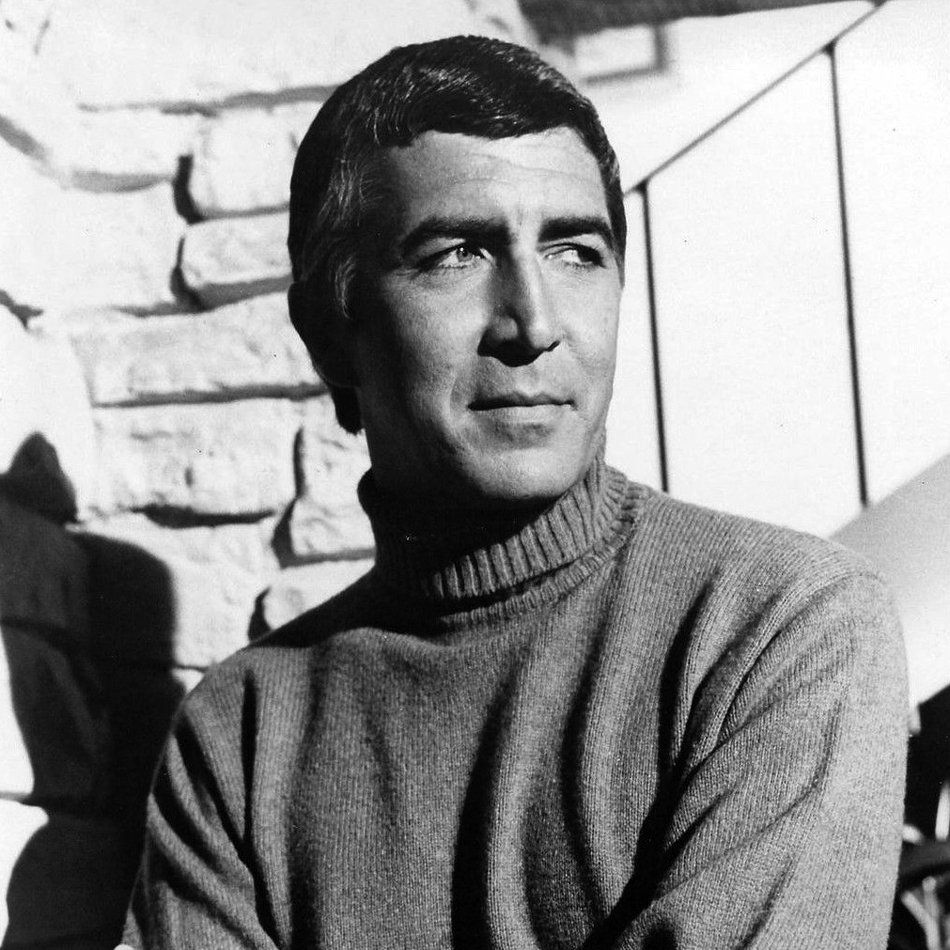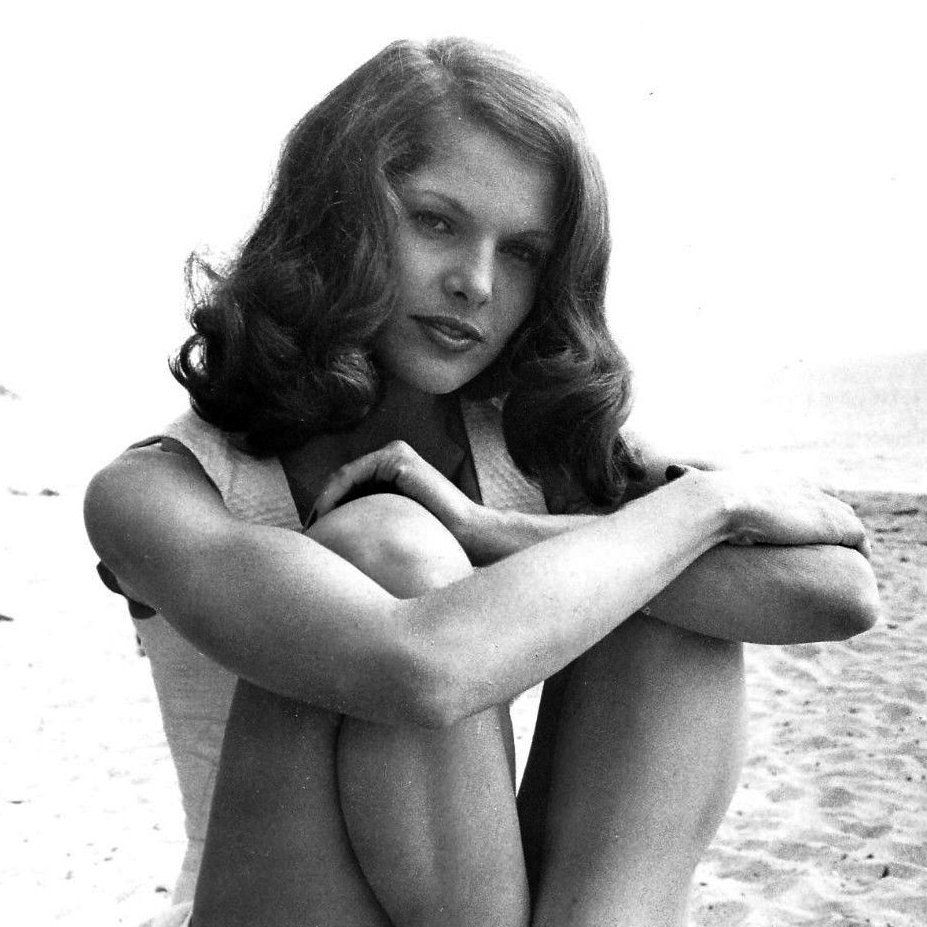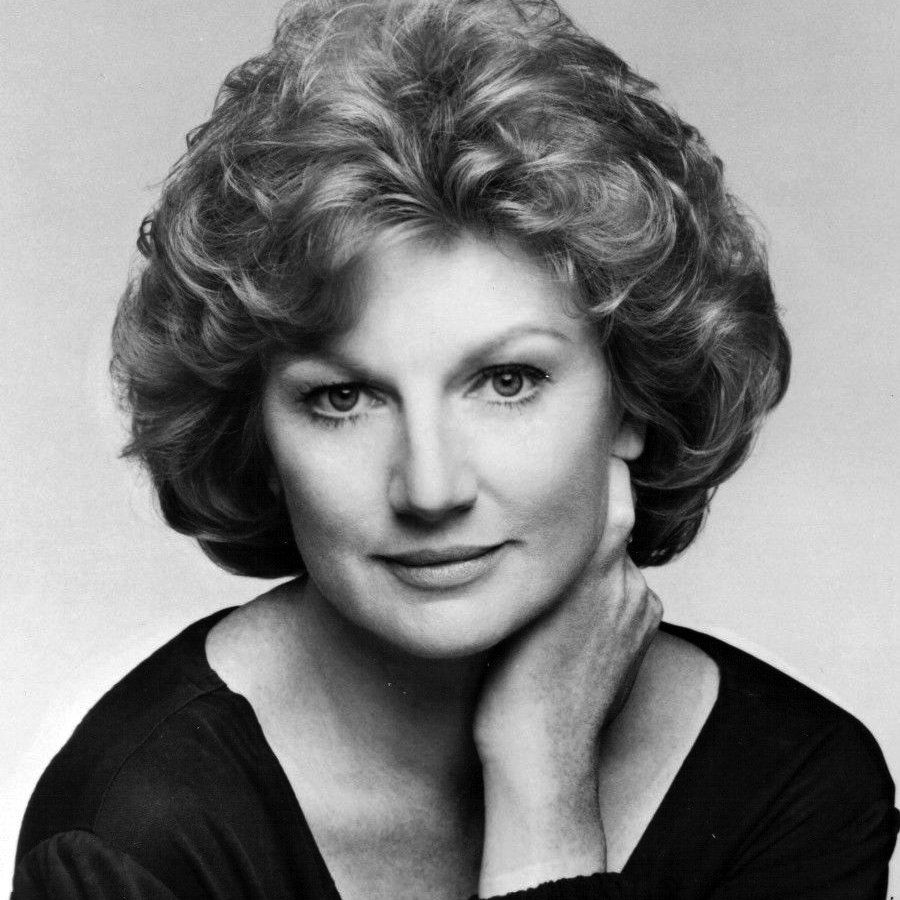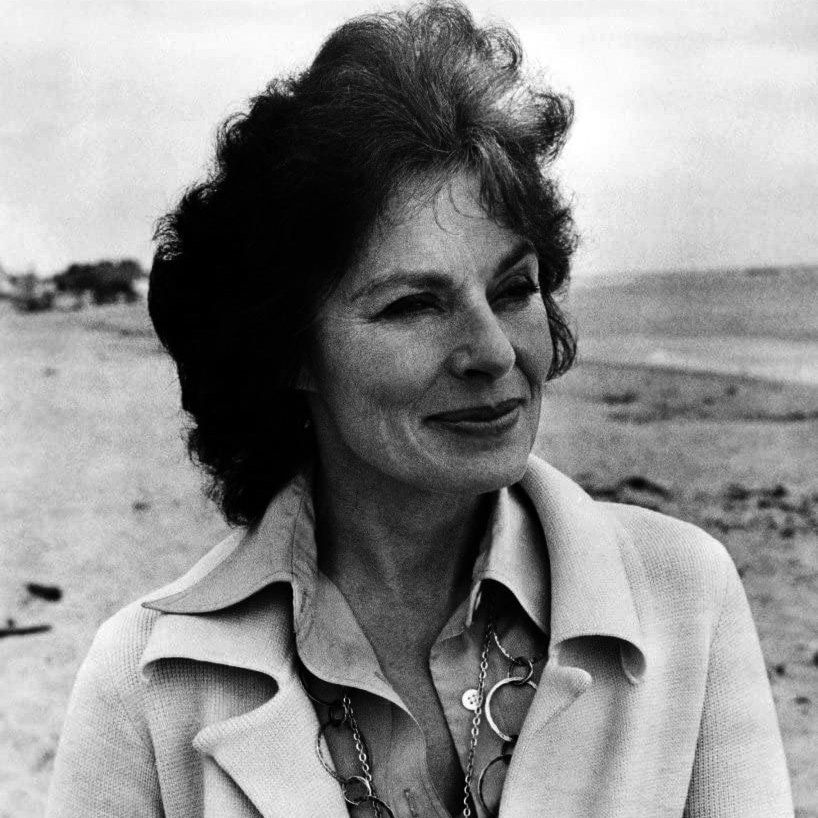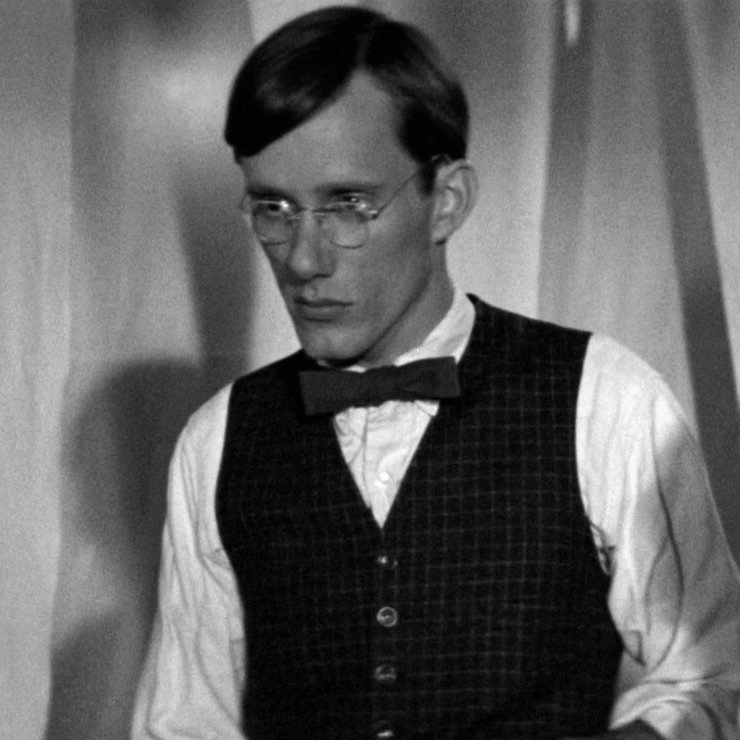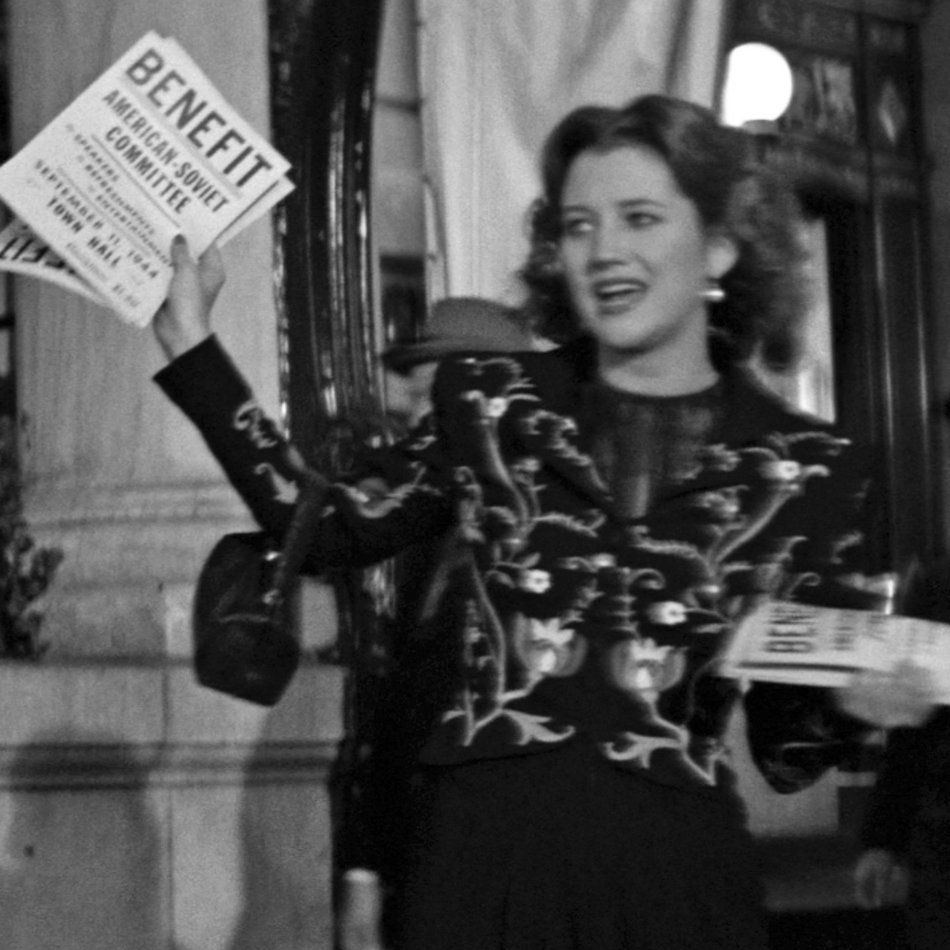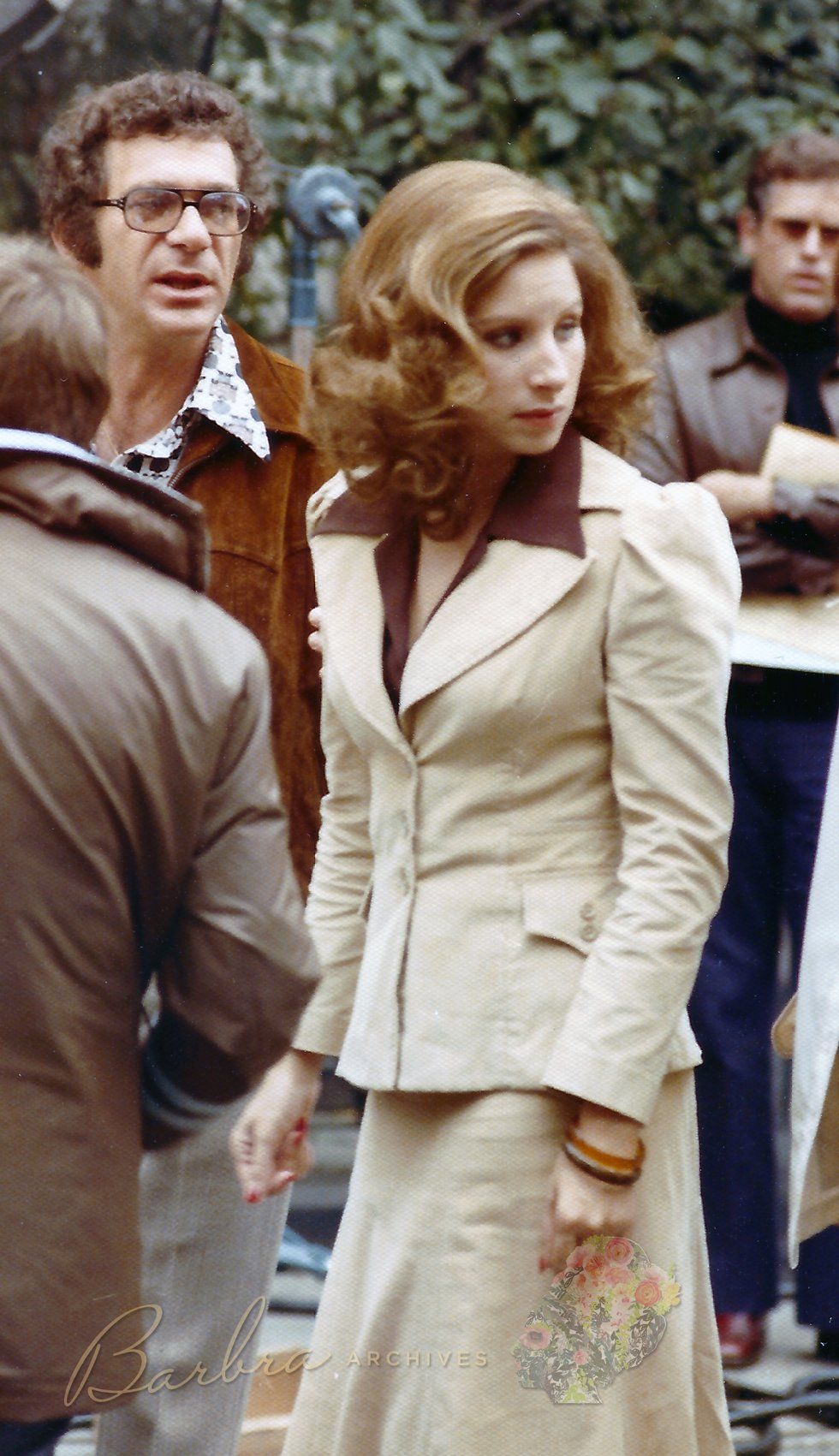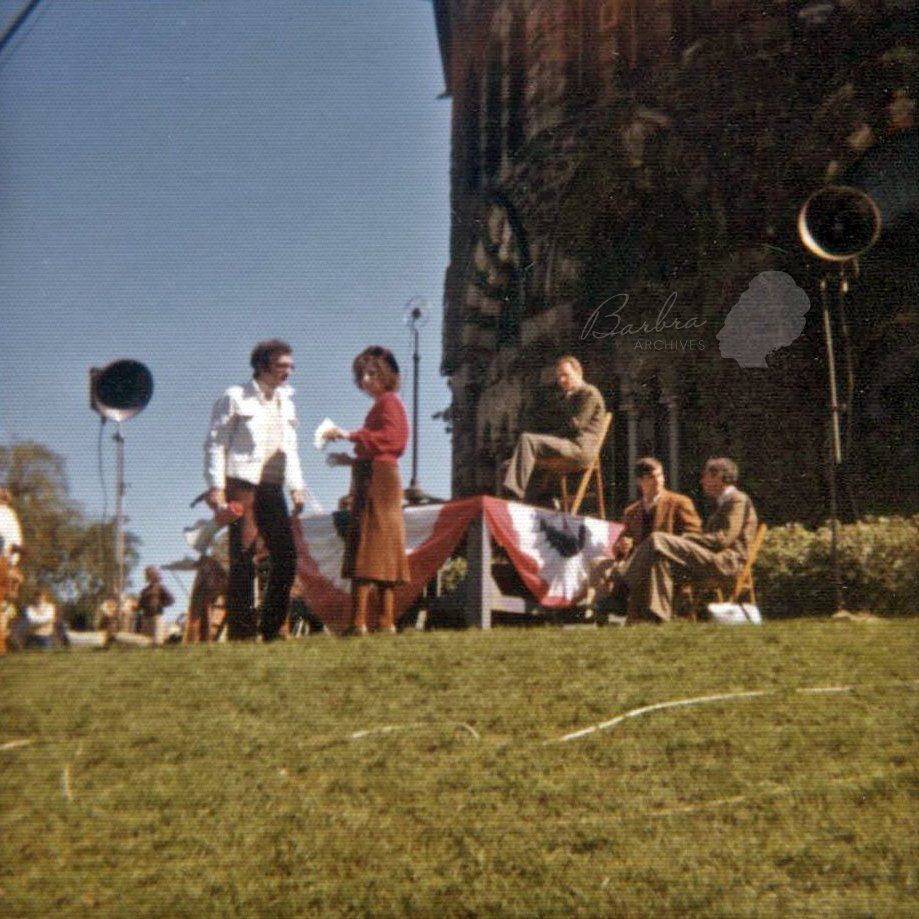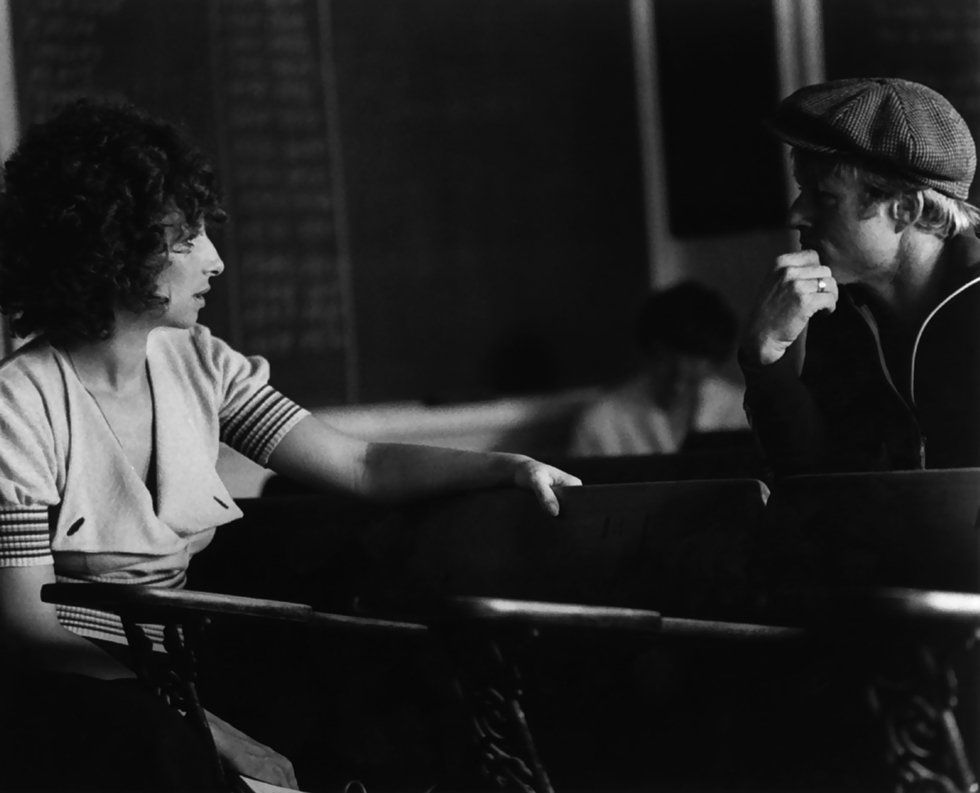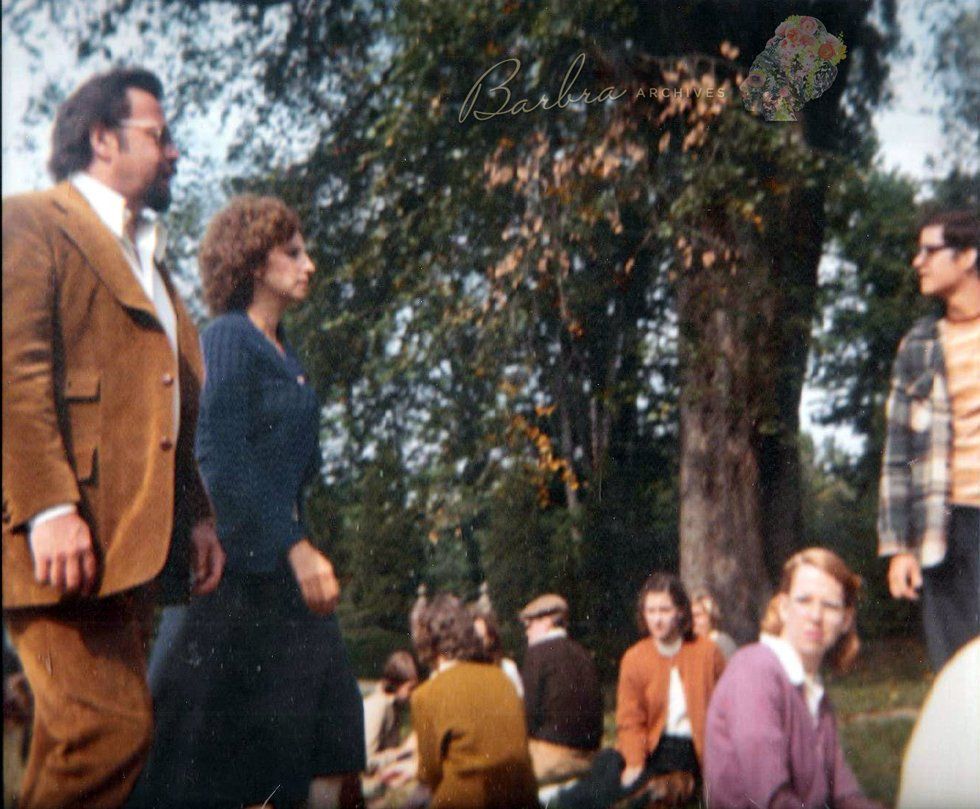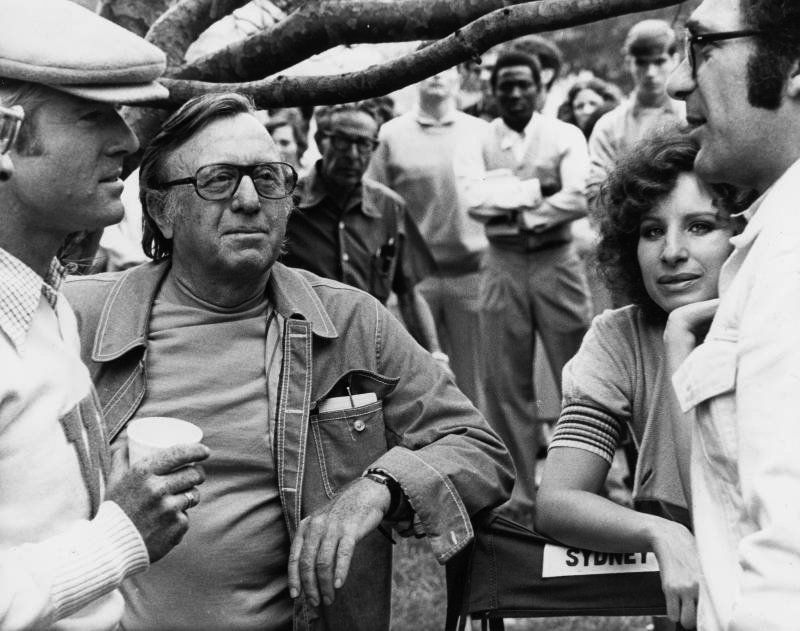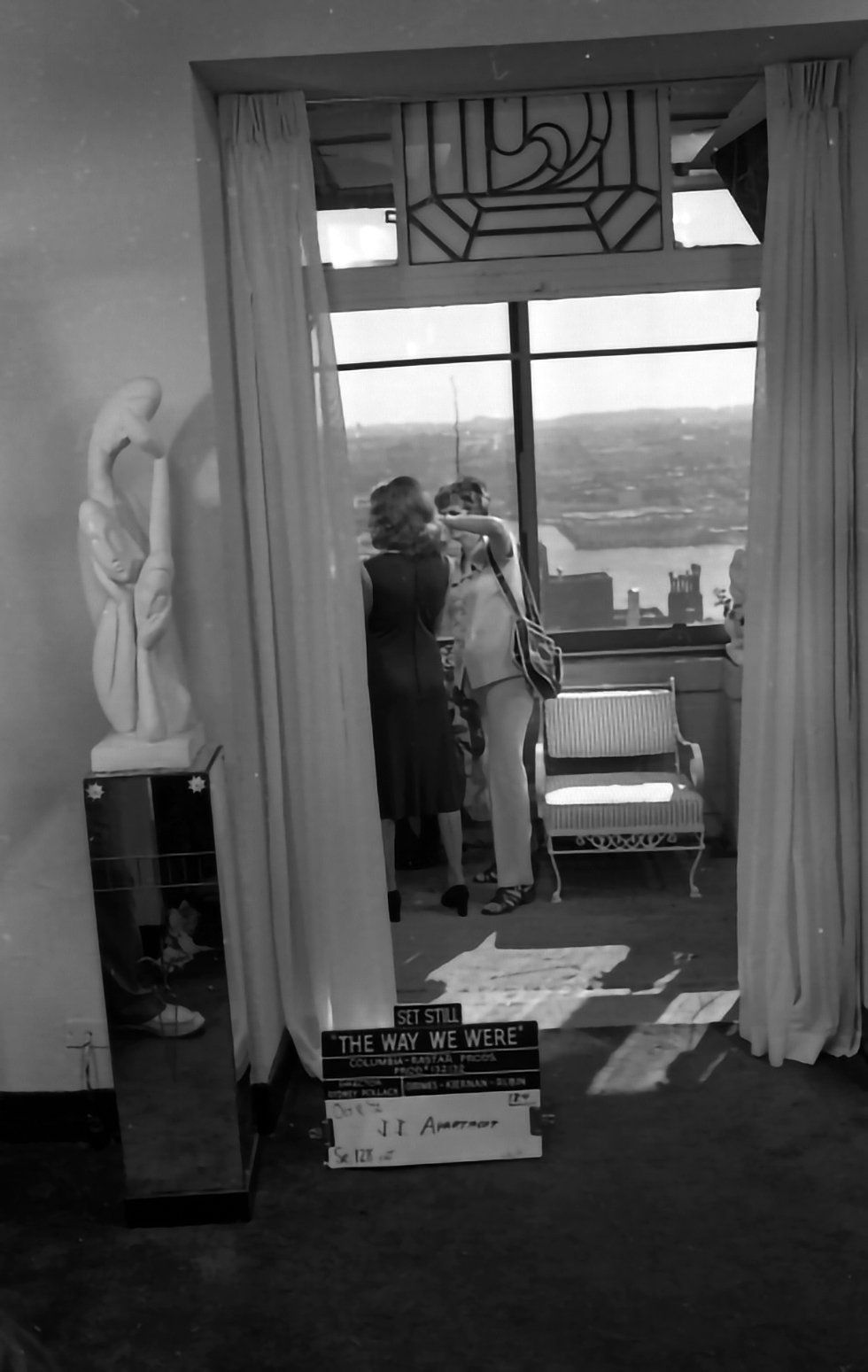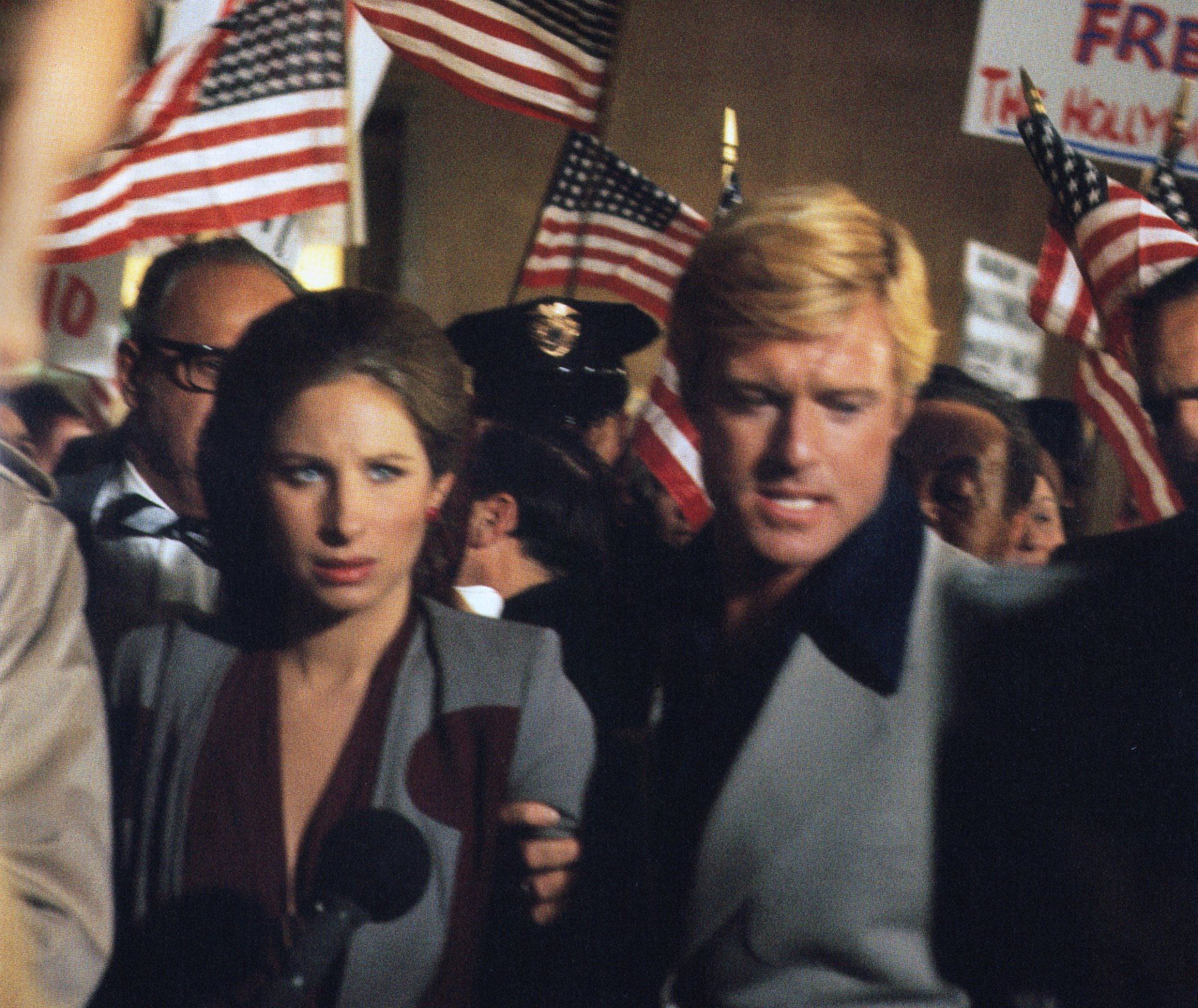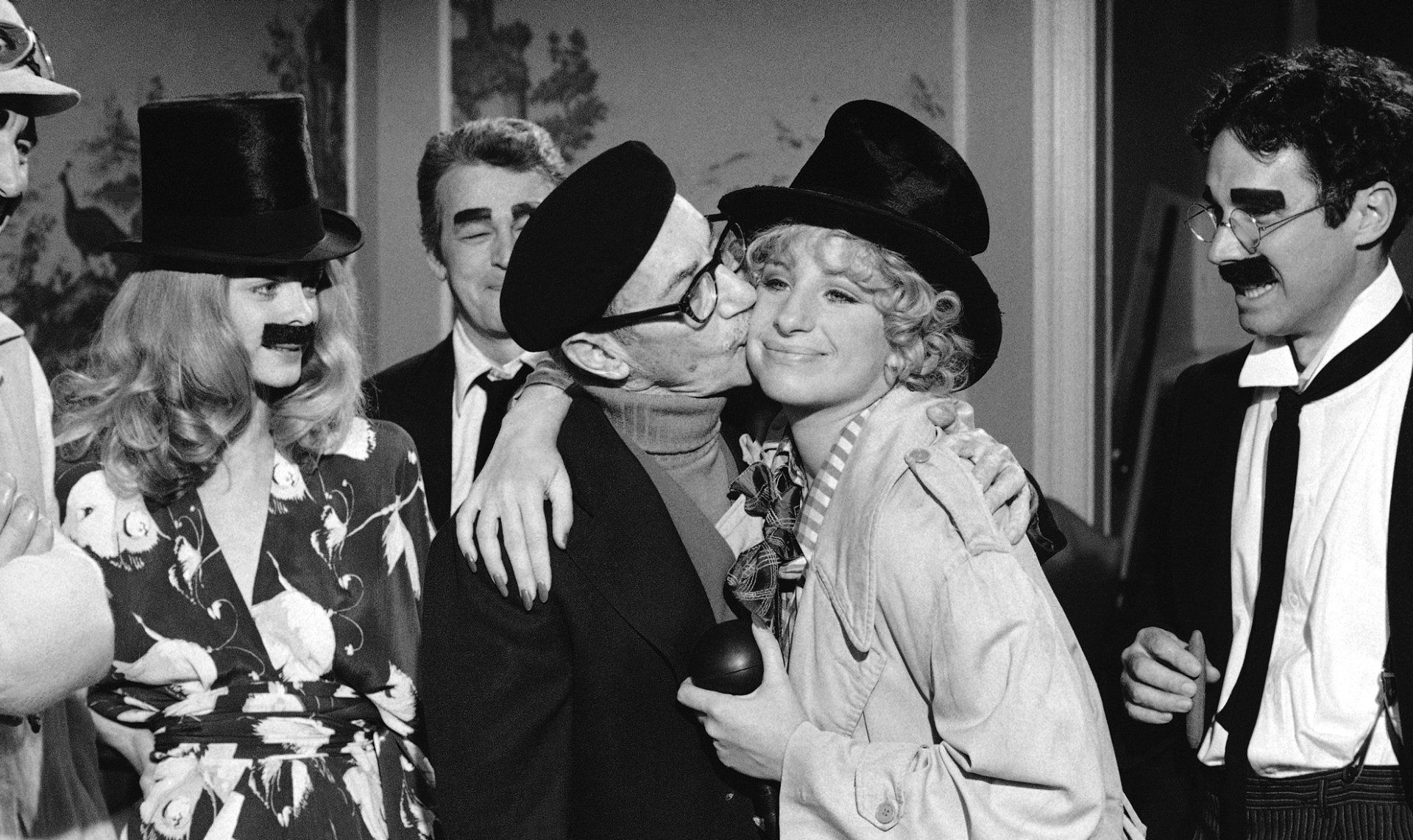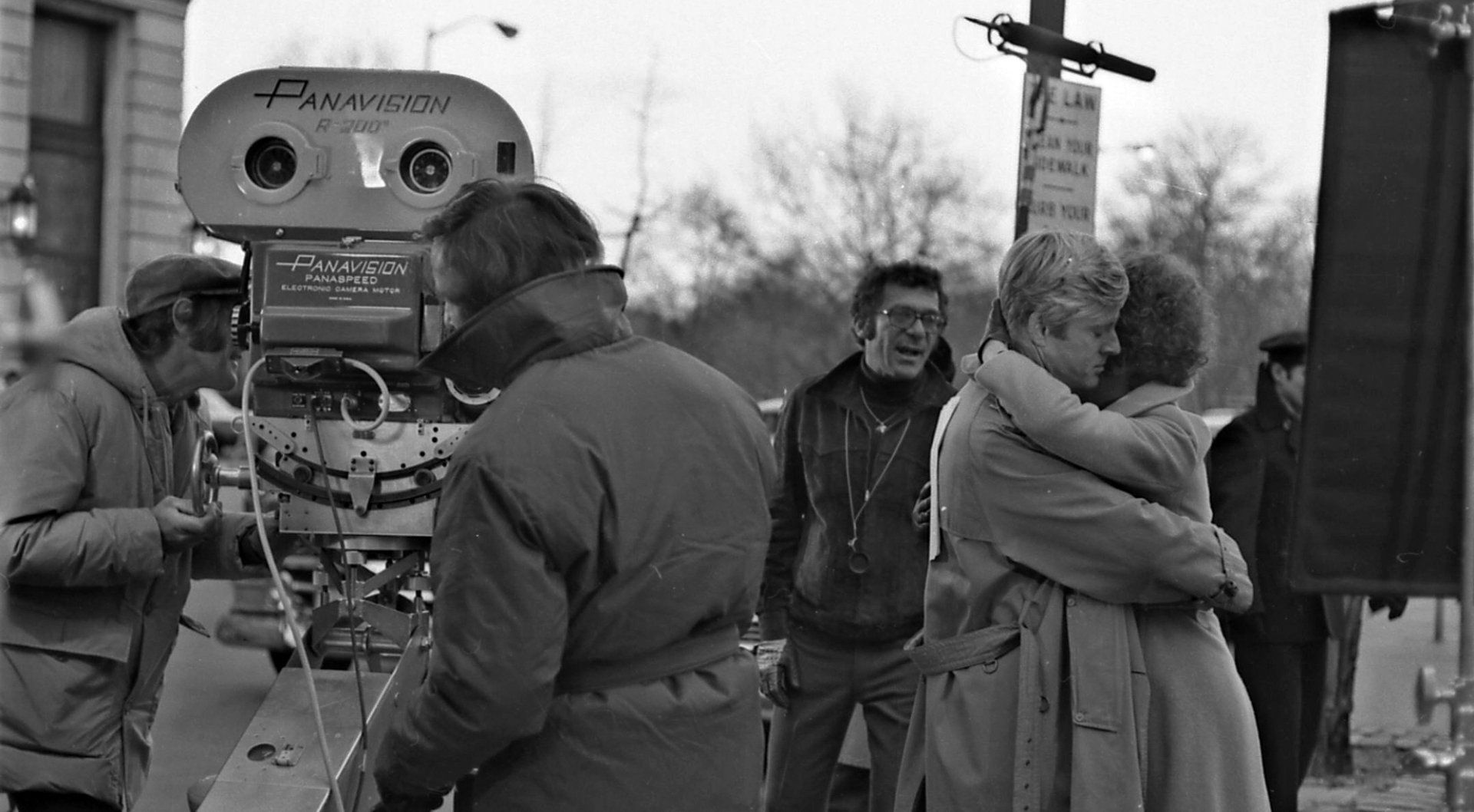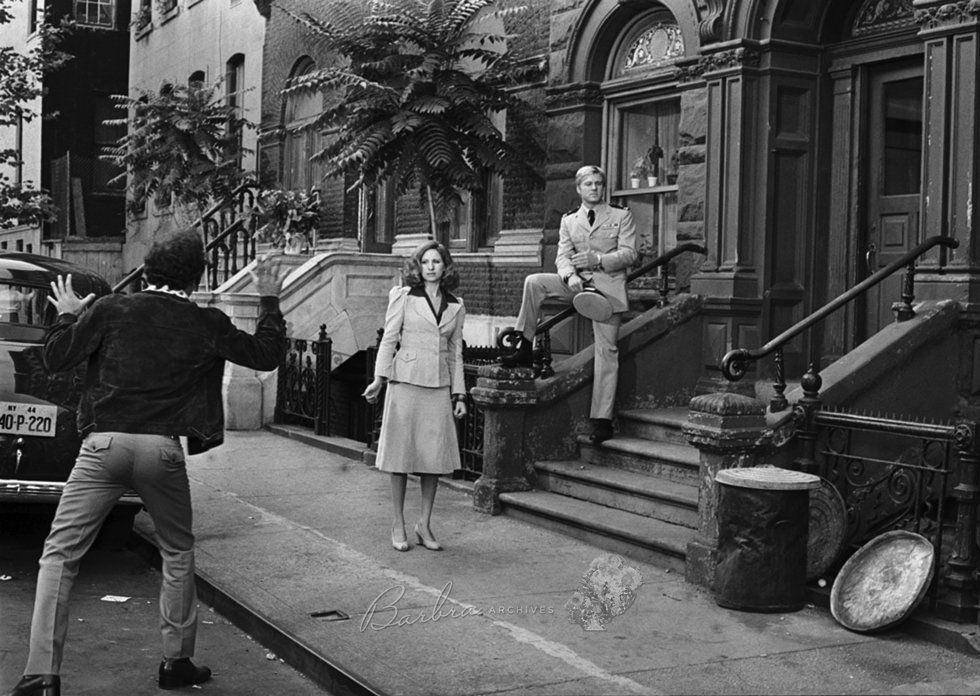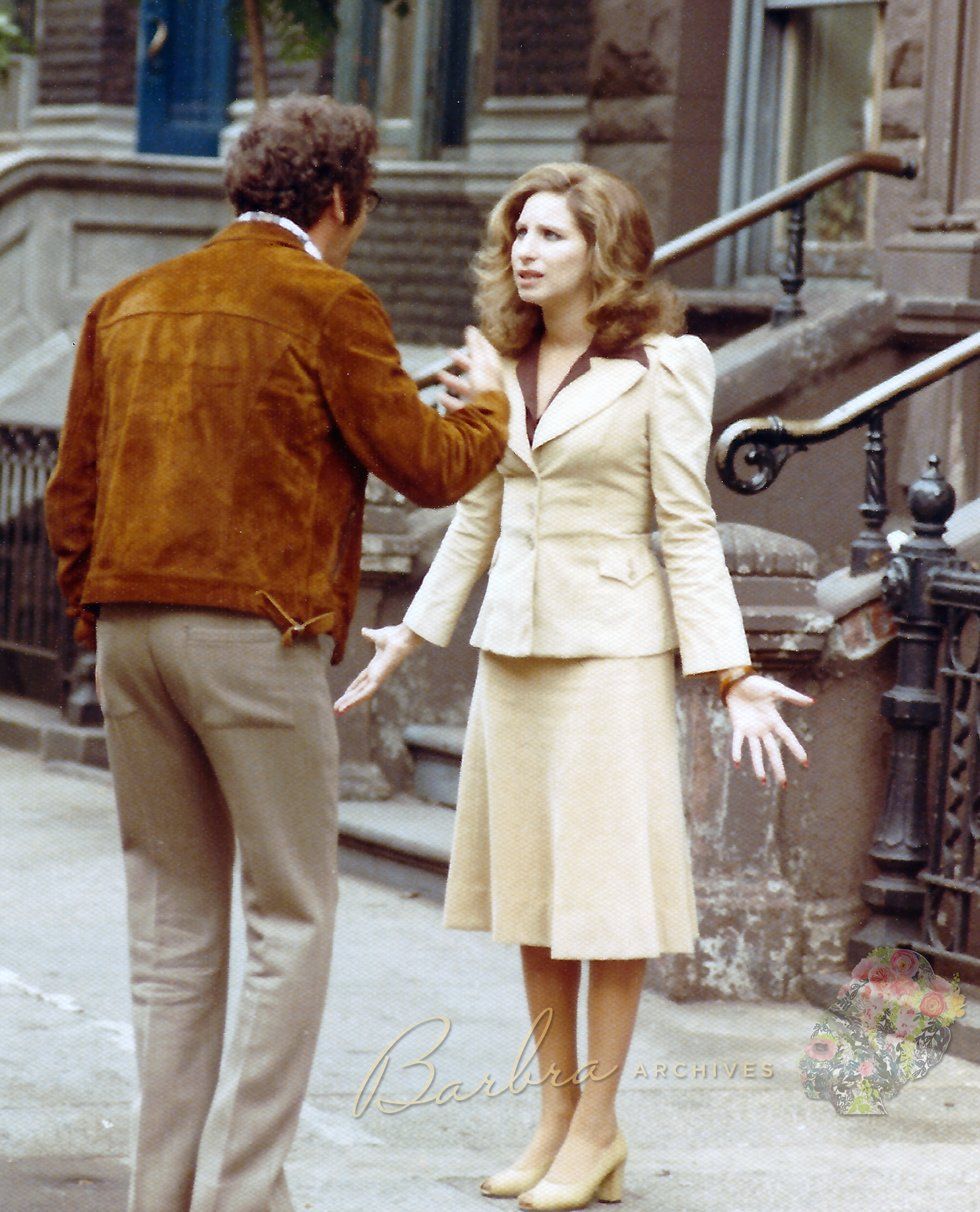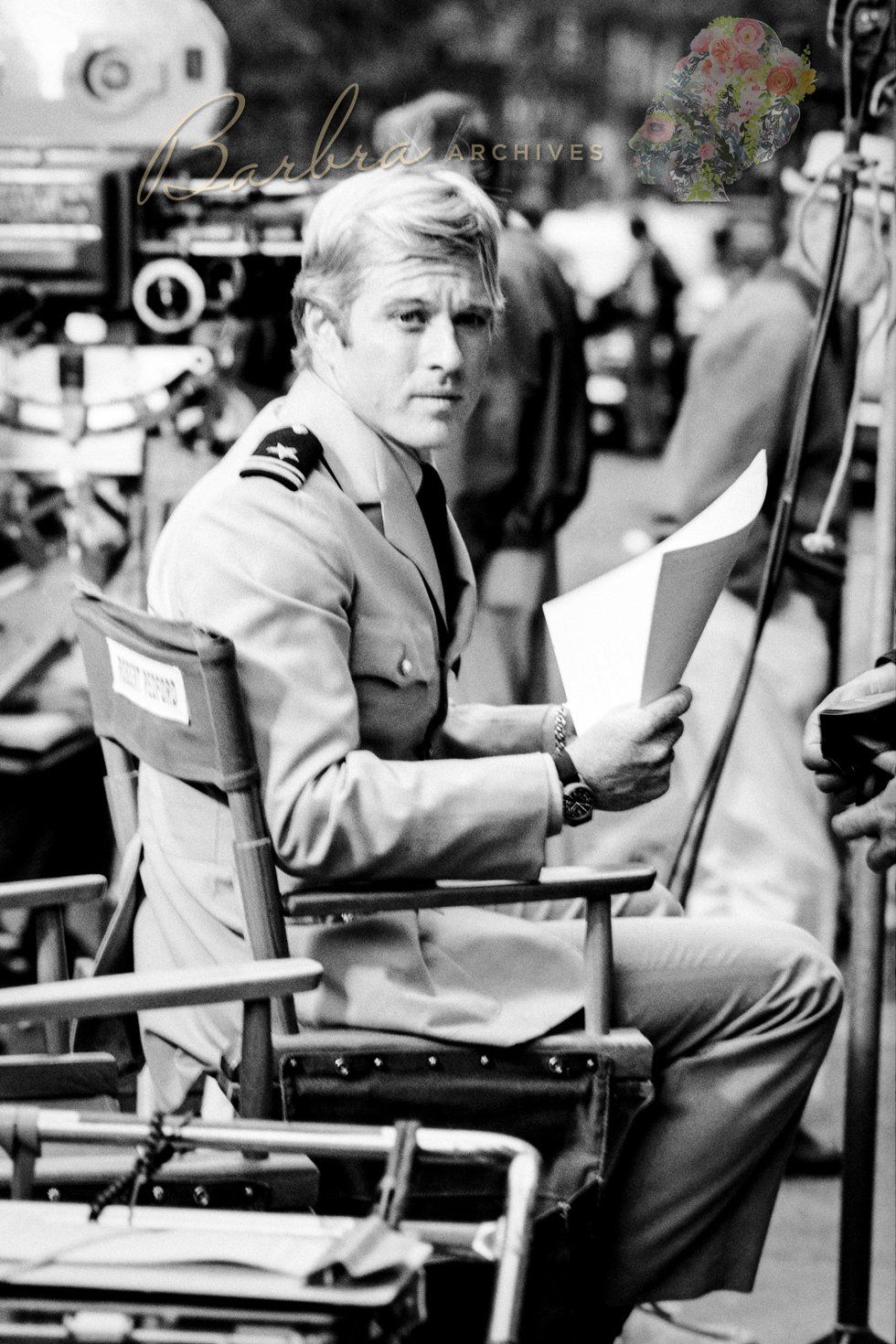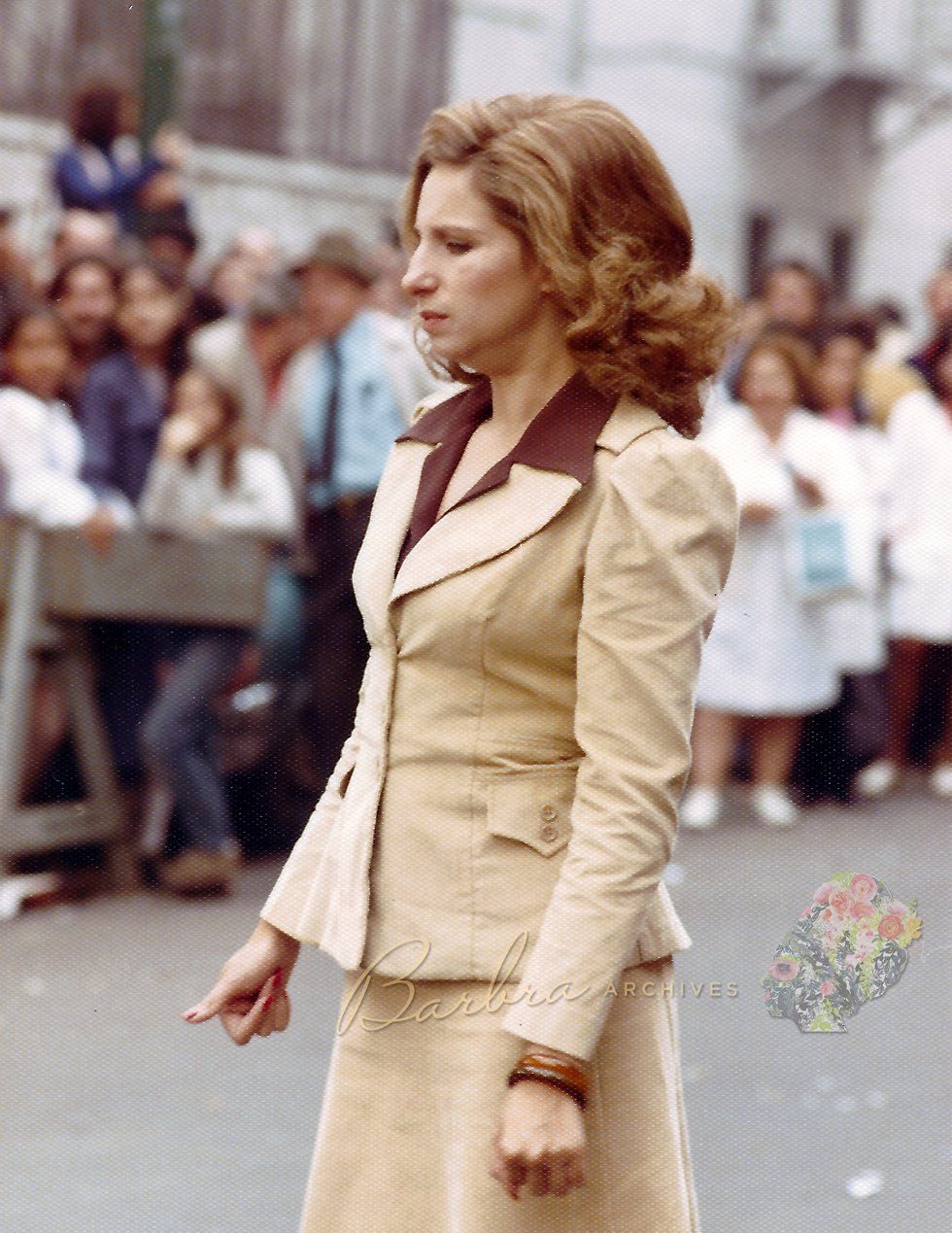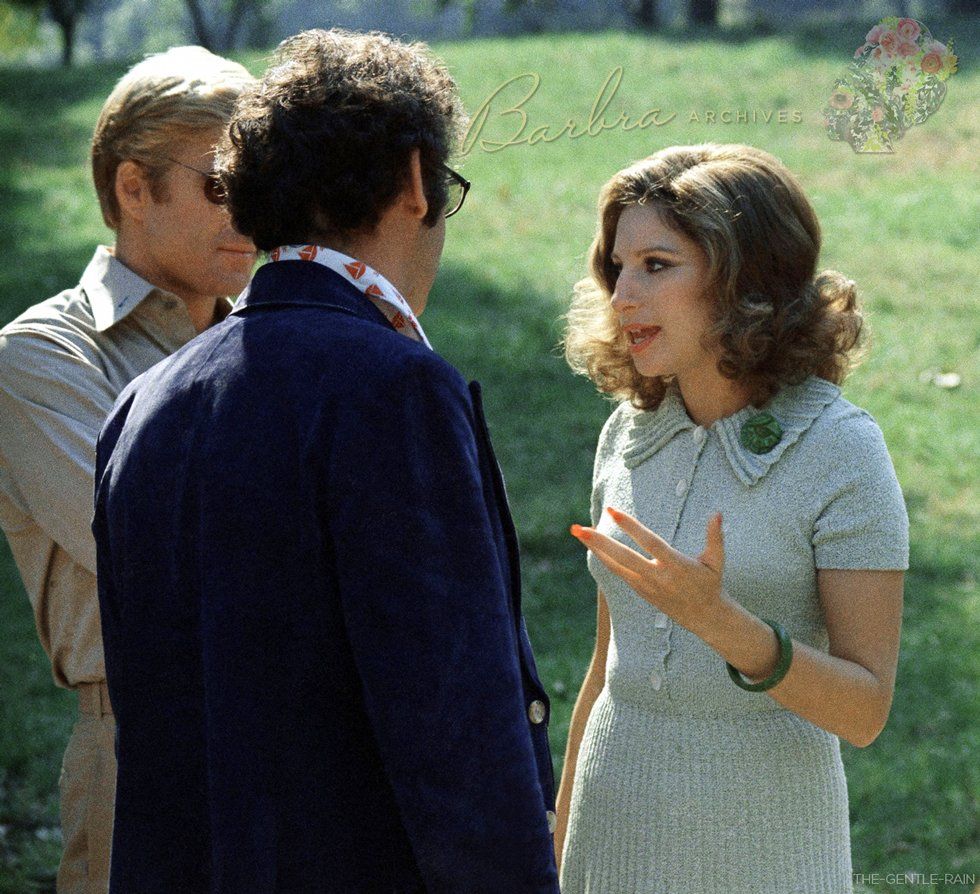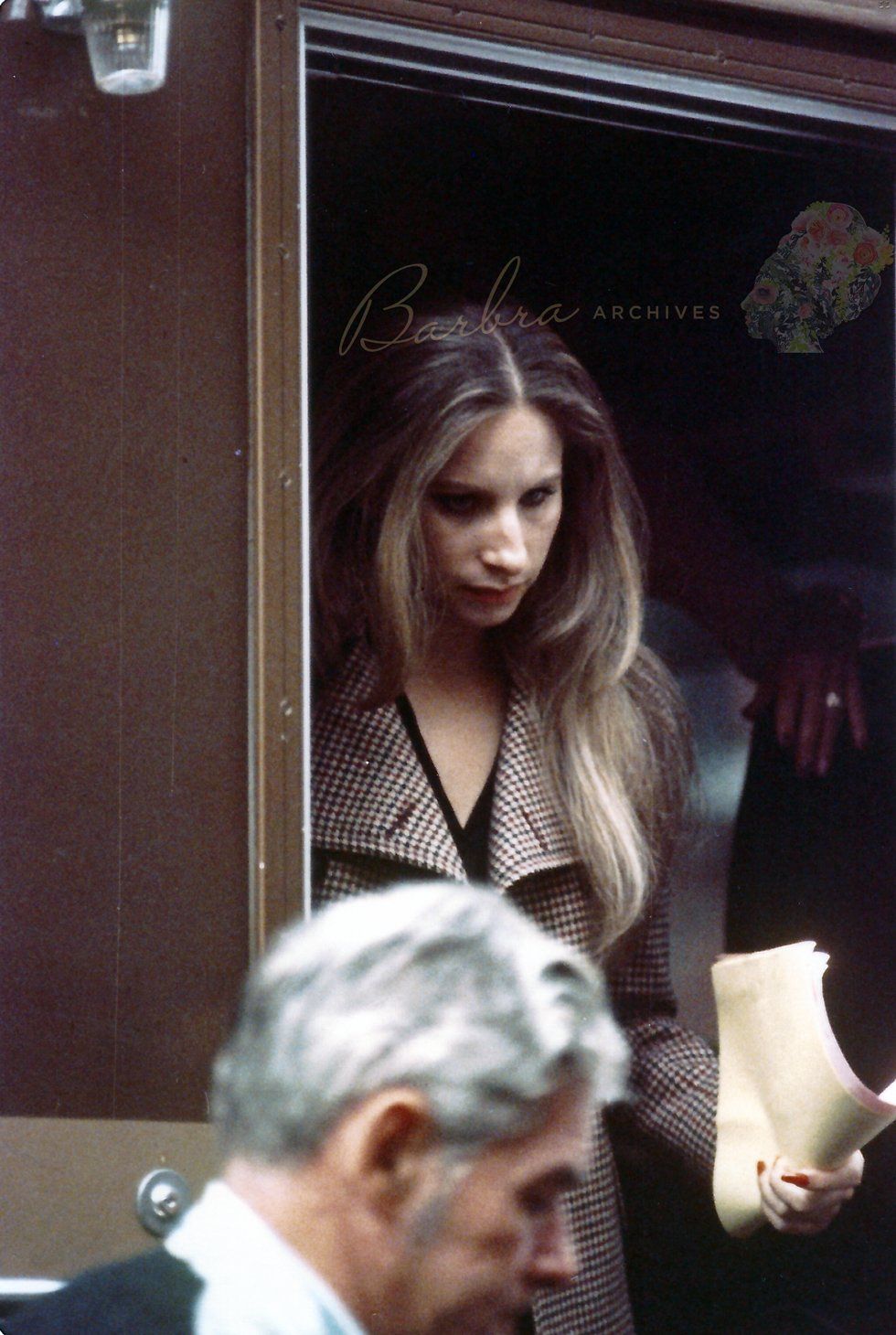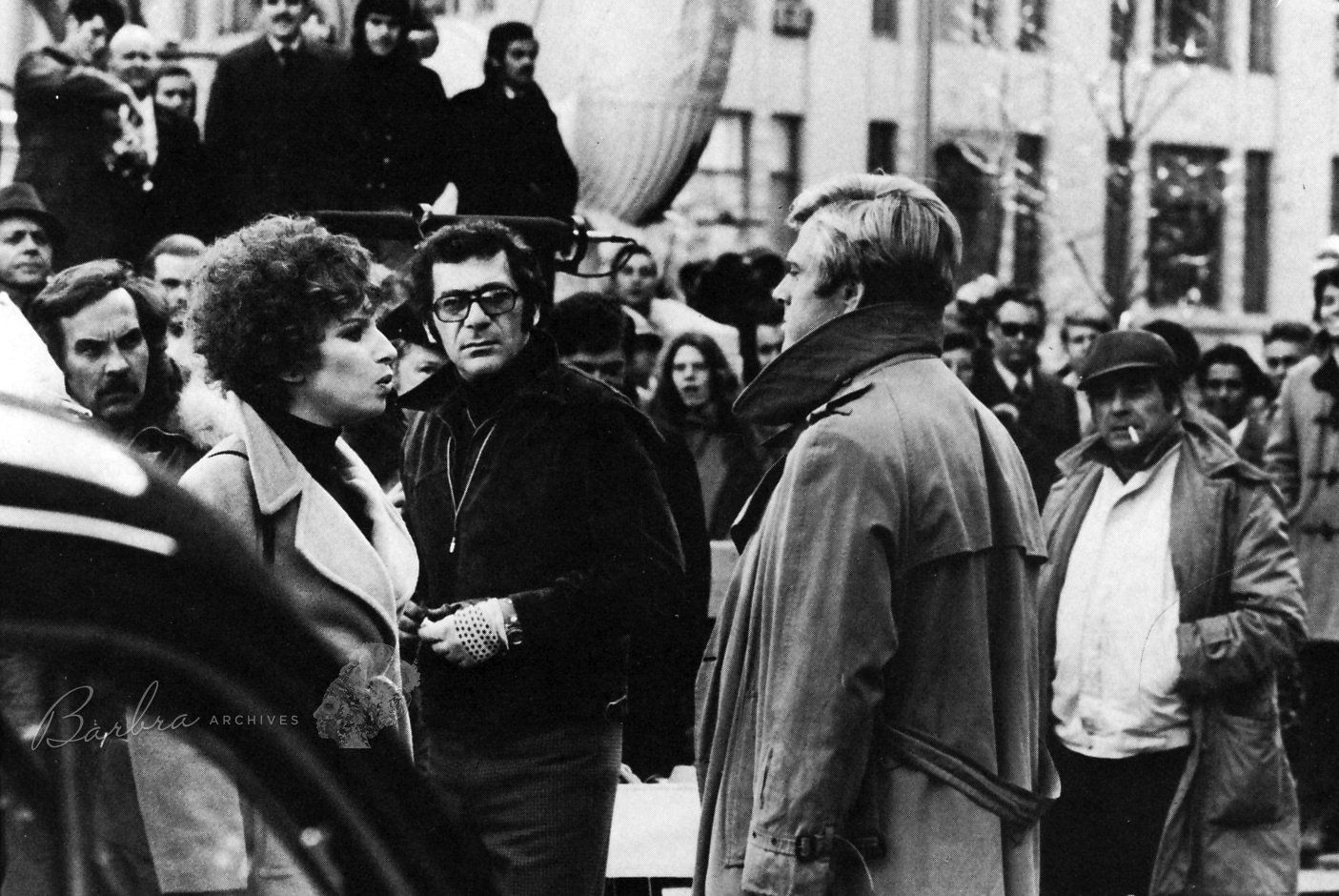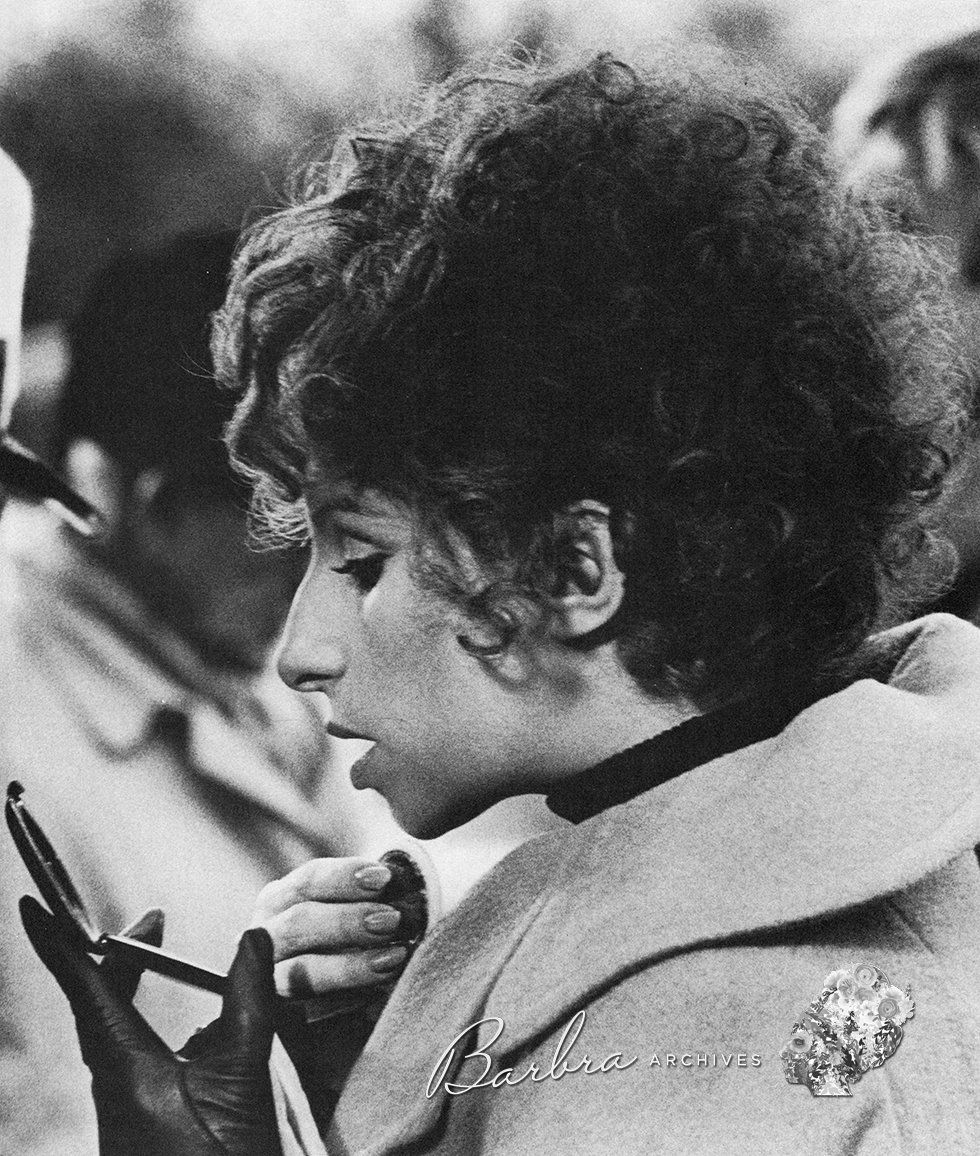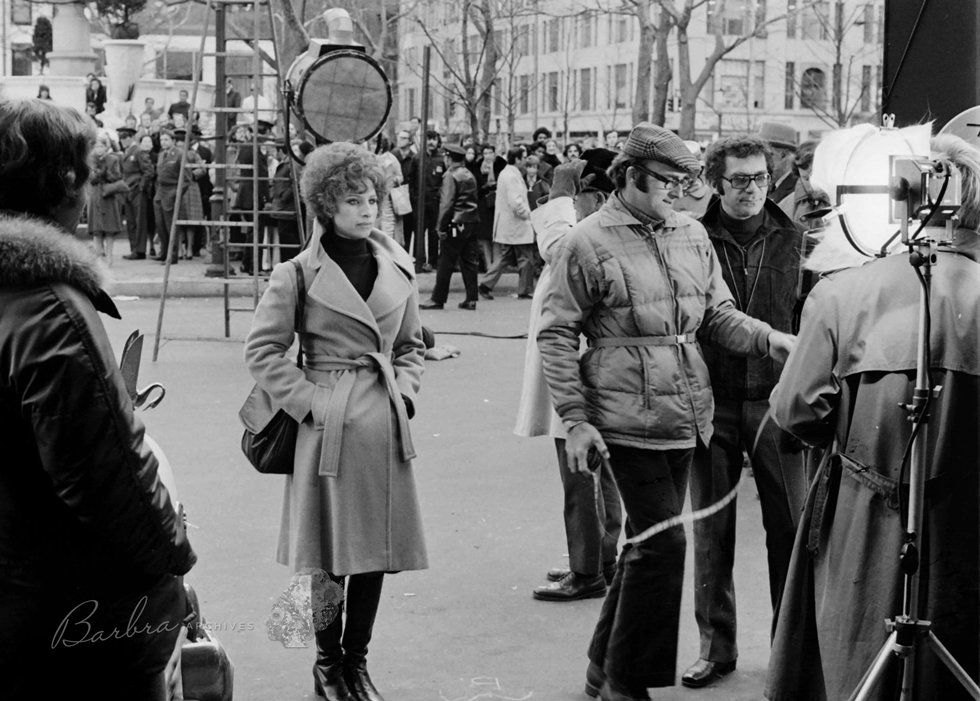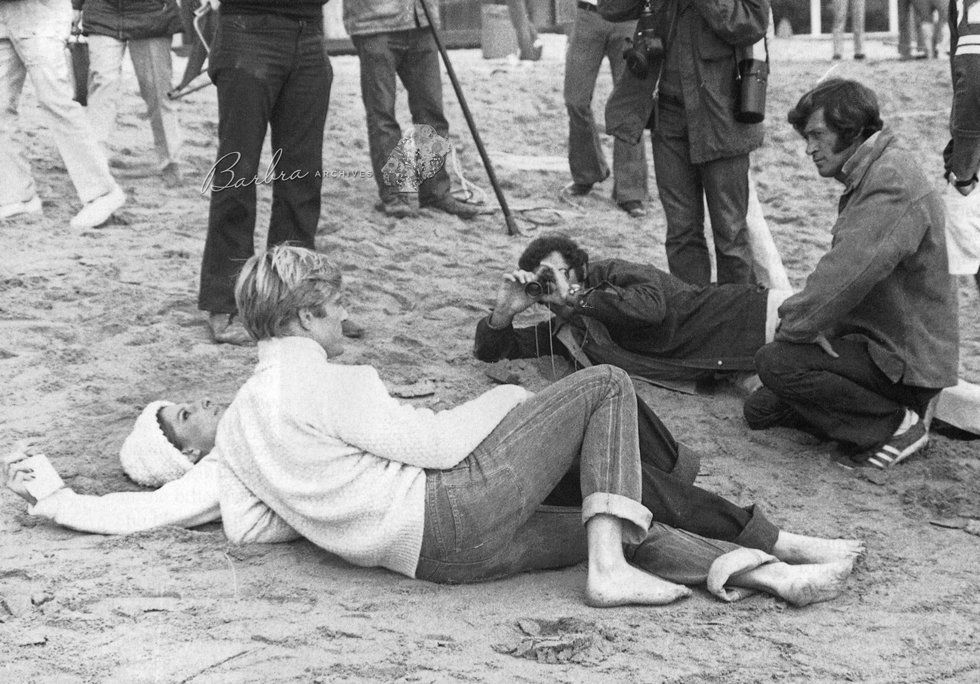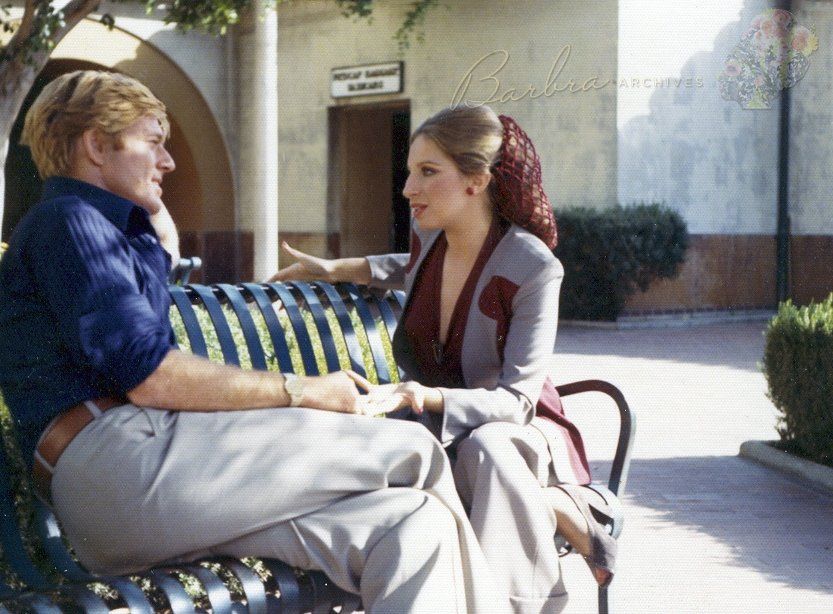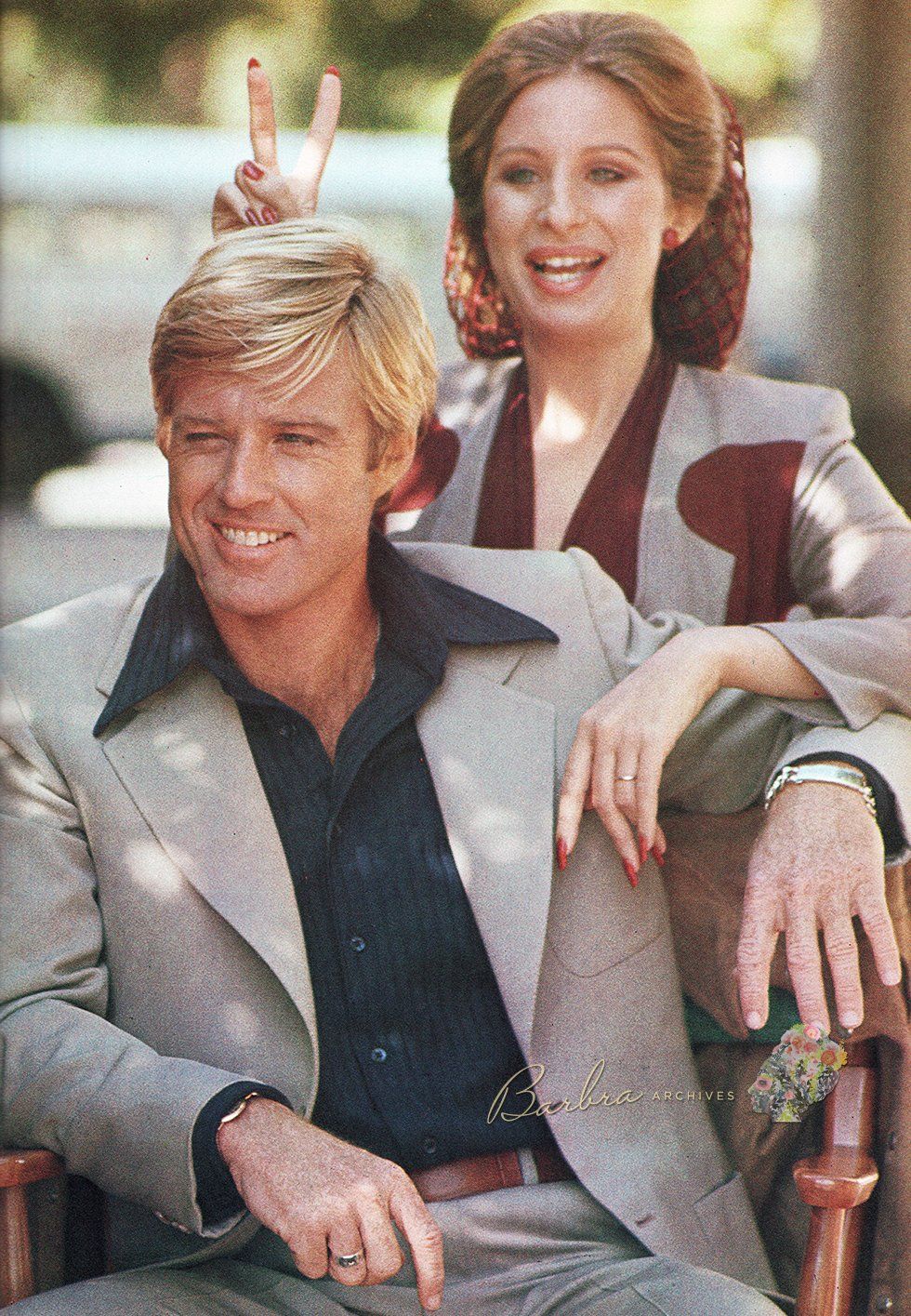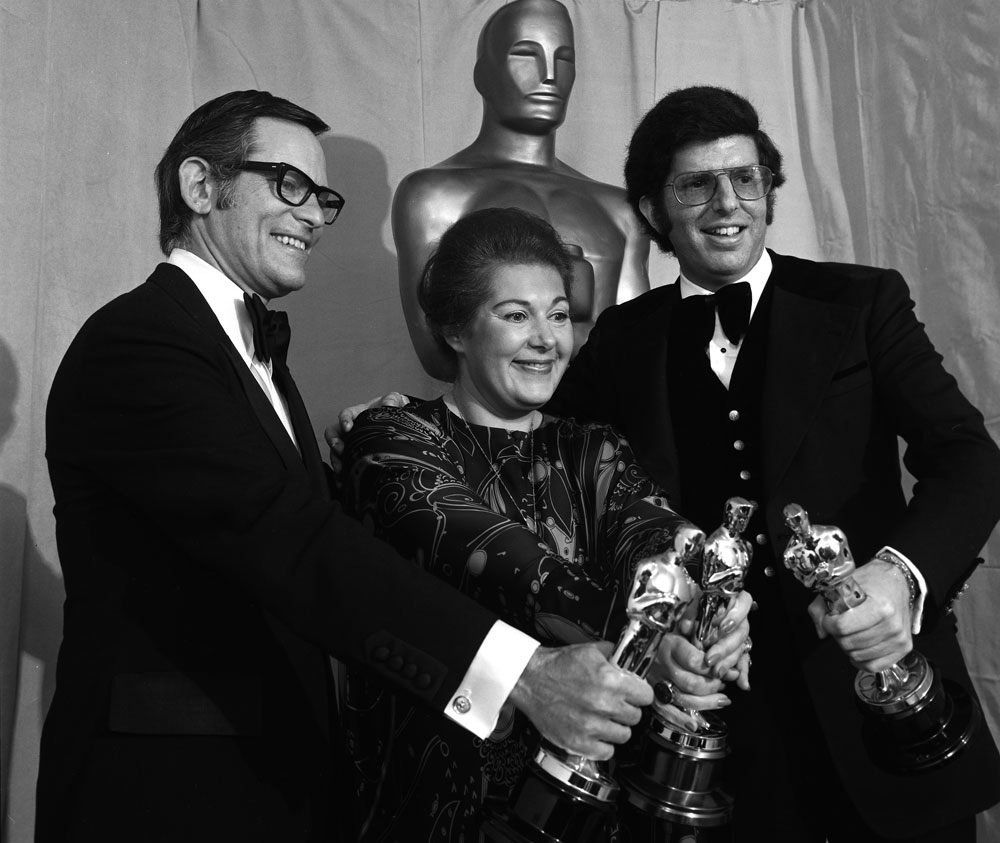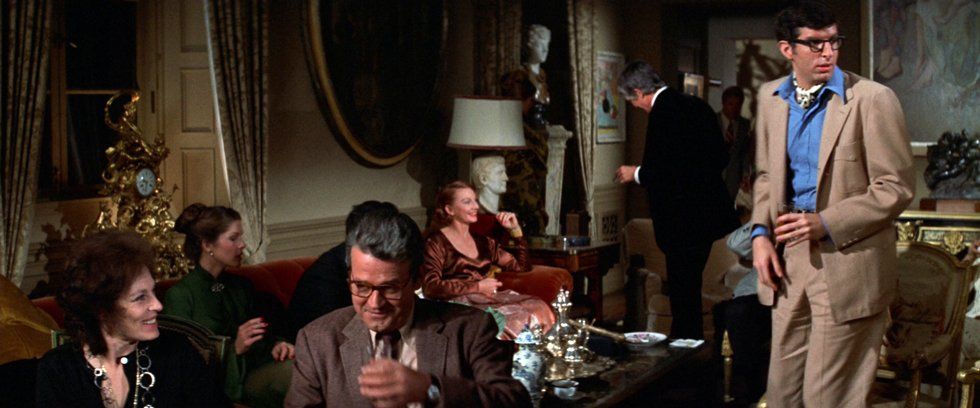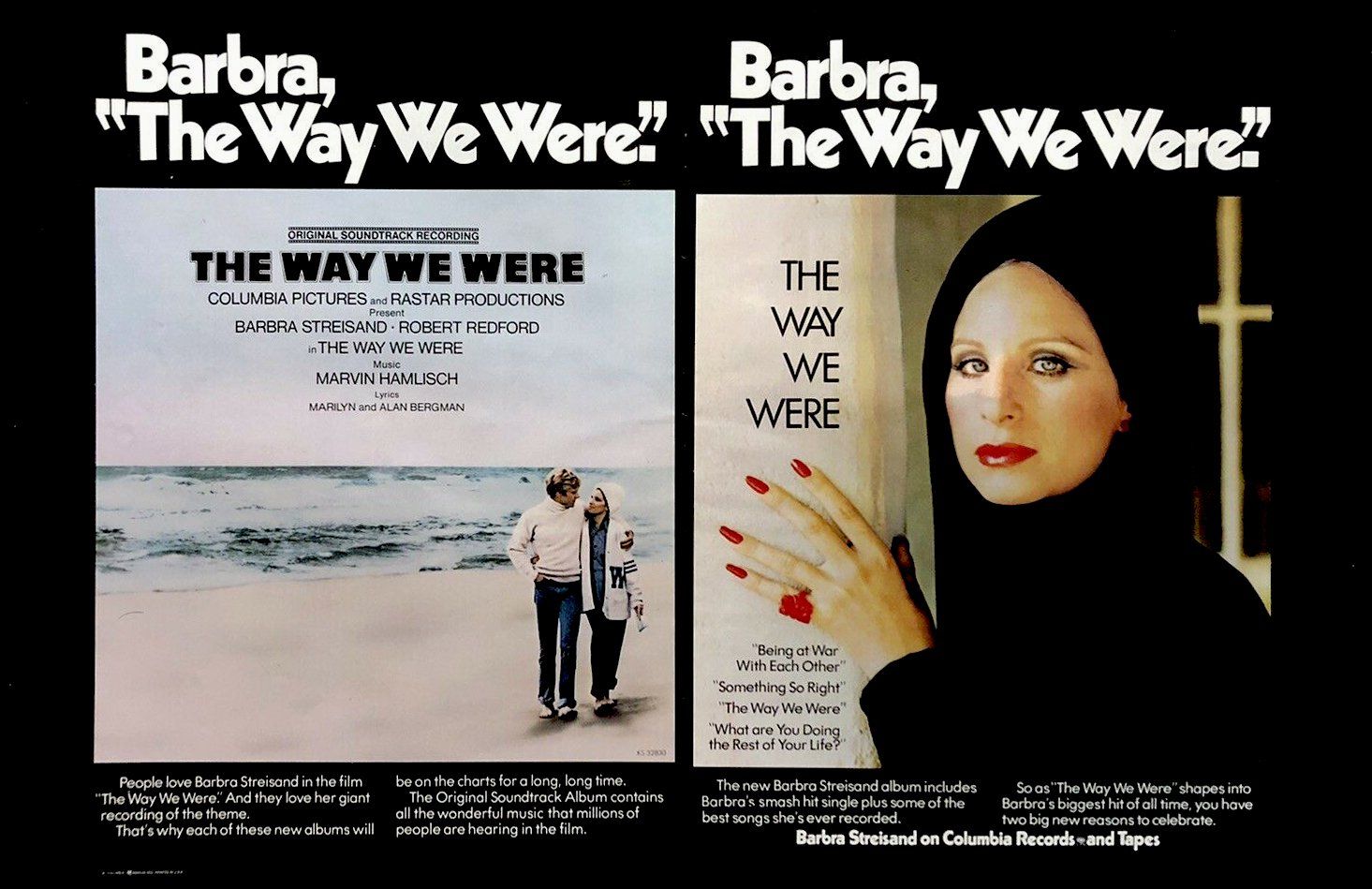As for the climax of the story, Laurents modeled The Way We Were after his married friends, Peter and Jigee Viertel. He met them in Paris after moving there to escape the Hollywood Witch Hunt; Jigee’s ex-husband informed on her, and the FBI pressured Peter, who found that “the husband of a Party member wasn’t welcome in either the Marines or the studios.”
After Laurents spun his story, Ray Stark asked for a ten or twenty-page treatment — In the movie business, a treatment is a synopsis of the story that happens in the screenplay, with action, and sparse dialogue. Laurents says he wrote a 125-page treatment (which he later turned into a novel which was released to bookstores May 1972).
Streisand recalled: “He wrote a treatment that had five great scenes in it. And so I said, Yes! I want to do that as a movie. And then he wrote the script.”
Sydney Pollack was brought on board to direct at the end of 1971. He was suggested by Arthur Laurents, who enjoyed the picture Pollack made with Jane Fonda – They Shoot Horses, Don’t They? Streisand liked the fact that Pollack had studied with acting coach Sanford Meisner.
In a letter he wrote to Robert Redford on December 4th, Pollack tried hard to convince his pal to take the role of Hubbell Gardiner. “Hubbell is NOT a cop-out or a weak guy, rather he is the most sophisticated character in the novel,” Pollack wrote. “Hubbell sees all sides of the argument and therefore cannot take the extreme positions Katie does.”
Pollack continued his plea to Redford. “The whole McCarthy thing can be a great asset if it’s handled unpretentiously and un-preachy.” As for Streisand, Pollack told Redford: “She’s unbelievably good in the right thing … and it’s been a long time since you’ve had any help [on screen] outside of BUTCH” [CASSIDY AND THE SUNDANCE KID, who Redford starred in with Paul Newman].
“If I knew you less well and we weren’t friends I wouldn’t sell so hard,” Pollack wrote. “But I’m too excited about this possibility not to push. For me, it’s that very rare combination of GOOD and Commercial.”
With Redford taking a second look at the movie, Laurents began rewriting for his star talents. Ray Stark brought him and Pollack to a ski lodge in Sun Valley, Idaho to work on the script. Of the Redford and Streisand pairing, Laurents likened them to “Astaire-Rogers but more because he had more sex to begin with than Astaire, she had more class to begin with than Rogers, together they made the screen swoon every time they were in the same frame.”


